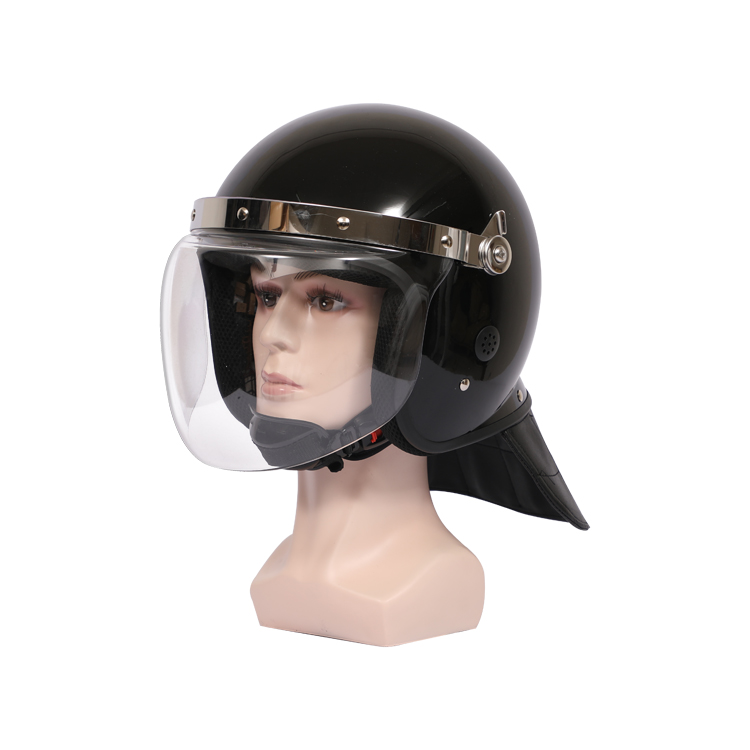
In recent years, the effectiveness of riot helmets in warfare settings has become a topic of keen interest and debate. With evolving threats and modern warfare incorporating various urban and guerrilla tactics, protective gear such as riot helmets has seen increased use among military and paramilitary forces. Although designed primarily for controlling civil disturbances, their deployment in more intense combat scenarios warrants a closer examination of their capabilities and limitations.
So, how effective are riot helmets in warfare? To put it succinctly: riot helmets provide a certain degree of protection but are not fully adequate for the rigors of warfare. Designed to shield against blunt trauma and projectiles commonly encountered during riots, they do offer some level of defense in combat scenarios. However, for comprehensive protection against ballistic threats and shrapnel, military-grade helmets are recommended. Let's delve into the specific aspects of their effectiveness.
Design and Structure of Riot Helmets
Riot helmets are engineered to offer protection against non-lethal threats typical in riot situations, such as rocks, batons, and rubber bullets. Constructed with robust thermoplastics or polycarbonate materials, these helmets feature visors for facial protection and padding for shock absorption.
The primary objective is to prevent blunt force trauma, which is essential during civil disturbances where the risk of such injuries is high. The helmet’s visors are usually made of high-strength polycarbonate and can resist impacts and some degree of puncture attempts. Their internal padding system is designed to diffuse the energy from strikes, reducing the likelihood of concussions and other head injuries.
However, their protection against higher-velocity projectiles, such as bullets from firearms, is limited. The materials used in riot helmets, though durable, are typically not as strong as the Kevlar and advanced composites used in military helmets. This results in a crucial difference in protection levels when confronted with battlefield conditions, where the threats are significantly more lethal.
Effectiveness Against Various Threats
Riot helmets are effective against:
Blunt Force Trauma: Events like baton strikes or thrown objects are well mitigated by the helmet’s hard shell and internal padding.
Low-Velocity Projectiles: Items like rubber bullets or deflected fragments are mostly handled by the helmet’s design, giving the wearer a reasonable level of security.
Chemical and Liquid Agents: Specialized riot helmets include visors that can protect against chemical splashes, which could be useful in scenarios involving tear gas or similar agents.
However, the effectiveness significantly drops when facing:
High-Velocity Projectiles: Standard firearms and shrapnel from explosions can easily penetrate riot helmets, posing a severe risk to the wearer.
Ballistic Threats: Unlike military helmets, riot helmets are not designed to stop bullets, rendering them inadequate in direct fire situations.
Explosive Impacts: The shockwave and debris from explosions can compromise the structural integrity of riot helmets, leading to potential head injuries.
Comparative Analysis with Military Helmets
Comparing riot helmets with military helmets highlights significant differences in capability and design purpose. Military helmets, often made from Kevlar or advanced composites, are designed to provide full combat protection, including ballistic resistance. They undergo rigorous testing to ensure they can withstand high-velocity impacts and shrapnel.
Military helmets also incorporate features like modular attachment systems for night vision goggles, communication devices, and face shields that can be crucial in warfare. Conversely, riot helmets focus mainly on visibility and mobility, which are more relevant in policing contexts than in combat.
The padded interiors of military helmets are also more sophisticated, incorporating elements to absorb energy more effectively from high-energy impacts, whereas riot helmets have simpler padding focused on low-energy impacts.
Practical Usage in Warfare
In modern combat scenarios, riot helmets may still find niche applications. For instance, during urban warfare, where soldiers might face civil unrest as well as combat, these helmets can provide temporary protection when a more lightweight and mobile solution is needed. They can be particularly useful during peacekeeping missions in volatile urban environments where the threat spectrum ranges from civil disturbances to sporadic armed conflict.
Additionally, for non-frontline roles like medics, engineers, or communications personnel, who may not be directly involved in combat but still face incidental threats, riot helmets can offer a practical level of protection without encumbering mobility.
Limitations and Recommendations
While riot helmets offer protection in specific scenarios, they should not be relied upon in full-scale warfare. If deployed in combat, their usage should be limited to situations where the threat level is reflective of riot scenarios rather than battlefield conditions involving high-velocity threats.
For military personnel, reliance on military-grade helmets is essential for ensuring comprehensive protection. Policy-makers and military tacticians should prioritize the use of appropriate gear for different threat levels to maximize the safety of their forces.
In conclusion, while riot helmets can provide a measure of protection in warfare, their effectiveness is ultimately bounded by their design limitations. For full-scale combat, military-grade helmets remain the optimal choice.
FAQ
Can riot helmets stop bullets?
No, riot helmets are not designed to stop bullets; they are mainly for protection against blunt trauma and non-lethal projectiles.
Are riot helmets used in modern warfare?
Yes, but their usage is limited to scenarios resembling riots or civil disturbances, and not on the frontline battling high-velocity threats.
What are riot helmets made of?
Riot helmets are typically made from thermoplastics or polycarbonate materials with internal padding for shock absorption.
By appreciating the context and design of riot helmets, we can understand their capabilities and limitations in warfare scenarios, ensuring better protection strategies for military personnel.














